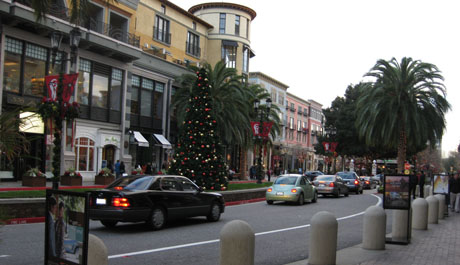
Woody Allen had a theory on success. He said most of the hard work was just by showing up. (Photo by rasdourian, via Flickr)
Tuesday is the day that councilmembers reserve for City Council meetings.Closed session council meetings start at 9-9:30am and often continue past noon. The public council session starts at 1:30pm, often merging into the evening session with a short break. If no evening session is scheduled, then the afternoon session simply continues into the evening until the entire agenda is covered.
Woody Allen once said that, “Eighty percent of success is showing up,” and many would agree with that statement. Fortunately, I have not had any family emergencies and thus I have been able to attend every council meeting and council committee meeting since 2007. Many council meetings, especially the years 2007-2010, went from morning till near midnight. It is our duty to attend the council meetings, specifically for the agenda items that require voting, and stay for as long at the meeting takes; just like an employee is expected to attend a meeting hosted by their employer.
Councilmembers have an obligation to attend council meetings and council committee meetings; however, there is no requirement that you must actually stay the entire meeting. But attendance is taken multiple times at council meetings.
First, you are marked absent if you are a few minutes late at the very start of the morning closed session meeting. Attendance is taken again during the closed session meeting, when each attendee signs a document. Finally, attendance is again taken at the afternoon and evening meetings.
Councilmembers are able to leave as needed if they are not feeling well or have some personal matter to attend to. Councilmembers need only be present for half the meeting to avoid being marked as absent. If not present for the vote of an agenda item(s), then they are marked as absent for the vote(s). If councilmembers are in the restroom during a vote, they are still marked as absent—so best to monitor one’s intake of water.
Every level of government has official legislative/committee meetings and attendance is the minimum requirement. However just because one elected official wants to leave the meeting does not mean everything should come to a stop. If you need to go, then go, but leave it at that.
Many wish that the actual council meetings were shorter than they are today. The bulk of the council meeting is actually the unlimited discussion by council and mayor. On the other hand, public discussion is limited to two minutes and sometimes only one minute per each speaker. While members of the public speak, each Councilmember has that ability to view a timer that tracks the speaker’s time till you hear the famous words, “Your time is up.”
In the U.S. House of Representatives, members are limited in their speaking time. For example, members are given five minutes for committee meetings. So, rather than limiting the amount of time that the council or mayor may speak, perhaps the same timer used for the public should be allowed to run, tracking how long a councilmember, mayor or staff has spoken or is still speaking. This would allow for more concise and direct dialogue rather than circuitous speeches.
For example, tomorrow the council will burn a couple of hours discussing county and state ballot initiatives.
If you are the type of person who dislikes meetings, then I would discourage you from seeking elected office.
